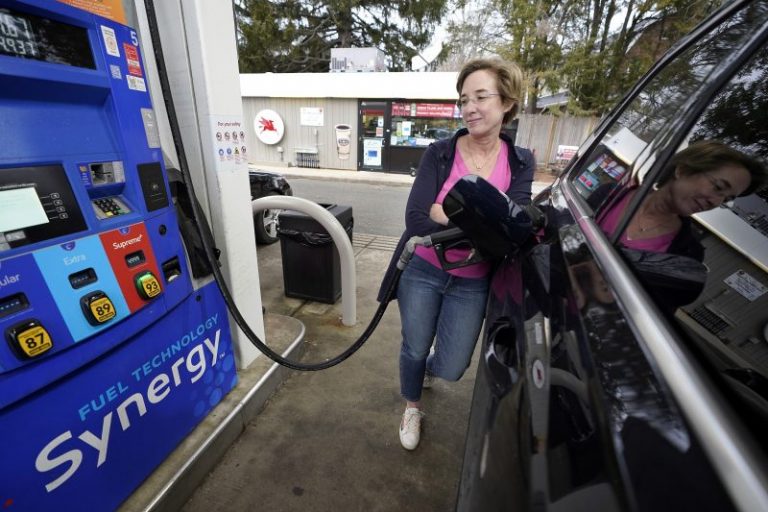The White House took a victory lap on Twitter Thursday.
“The national average price of a gallon of gas is now $3.33,” it wrote — “a decline of $1.69 since its peak in June.”
On his own account, White House assistant press secretary Abdullah Hasan noted that, not only were gas prices now lower than a year ago, even Fox News was reporting on it.
Look, celebrate victories when you get them and all that. Gas prices being lower is better for U.S. bank accounts than gas prices being higher. But it would be nice to move past this moment in which isolated gas price figures are used as cudgels on both the left and the right.
It has been a bad year for gas costs, of course. This is largely a function of the cost of oil, as gas prices always are. The decline in costs has the same trigger; in Thursday, the cost of a barrel of U.S. crude hit a low for the year.
While the average cost of a gallon of gas is lower now than it was a year ago, prices last December were in the midst of an upward climb that would continue into this summer. It was just over a year ago, for example, that the Democratic Congressional Campaign Committee was so eager to declare victory over rising gas prices that it touted a 2-cent decrease in prices over a two-week period, a decrease captured in this graph I made at the time.
Prices now are just about where they were after that 2-cent drop.
Trends are important! Again, going down is better than going up (with the important exception that lower gas prices encourages consumption and increased consumption increases greenhouse gas emissions which exacerbates the long-term warming trend the planet is experiencing at a moment when we really need to be pushing those emissions back down but that is a longer conversation for another day). But “lower than a year ago” is a different message than “lower than a year ago, a point at which gas prices were near a 7-year high.”
Using data from the Energy Information Administration, we can look at the annual distribution of gas prices over the past 32 years. You can see that the 2022 prices have generally ranged a lot higher than they are now and that prices now are about where they were at the 2021 peak. You can also see, interestingly, that prices are within the same range they often were the last time President Biden had a White House job — as Barack Obama’s VP.
Now let’s talk about the Trump figures there.
A common snippet of political rhetoric over the course of the year has been to compare gas prices under Biden unfavorably with prices under Donald Trump. The cause for this is obvious: the midterm election cycle prompted a desire to contrast one party with the other (despite the limited effect that presidents can and do have on gas prices). Even recently, well after the midterms, Trump was sharing memes like these on his Truth Social account.
Out of an abundance of generosity we will not dwell on how the middle one compares current conditions to “a year ago.’ Instead, notice the theme about the gas prices: under Trump, gas was “affordable,” under Trump, the price was $2.31 compared to Biden’s $3.91.
This comparison isn’t terrible, even if the figures are sort of random. About a quarter of the weeks that Biden has been president, average national prices have been above $3.91. About a quarter of the weeks that Trump was president, prices were below $2.31.
But there’s an important caveat. More than two-thirds of the weeks that gas prices were that low came in 2020, after the emergence of the coronavirus pandemic crushed travel and, with it, the price of gasoline. There was a ripple of anti-Biden rhetoric shortly before the midterms in which Trump was praised for having gas prices below $2 — which, again, did happen (briefly), at the cost of throwing a wrench into the gears of the economy and seeing hundreds of thousands of people die. Resolving that wrench in the economy, of course, also contributed to the surge in gas prices in 2021 and 2022.
A relatively succinct summary goes like this: Gas prices are down substantially from the high earlier this year. They’re about where they were a year ago — after prices had begun to go up. Weekly average prices remain higher than they were at any point in Trump’s presidency, but, for context, the average price in 2018 (the highest of his presidency) was about 80 percent of the current price. Gas below $2 a gallon would be nice, but it’s not worth closing down most economic activity to achieve it.
A more succinct summary: Gas prices are a land of contrasts. It would be nice if more people admitted that.

